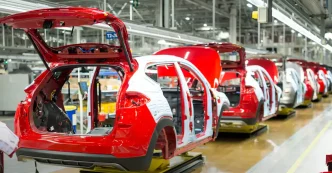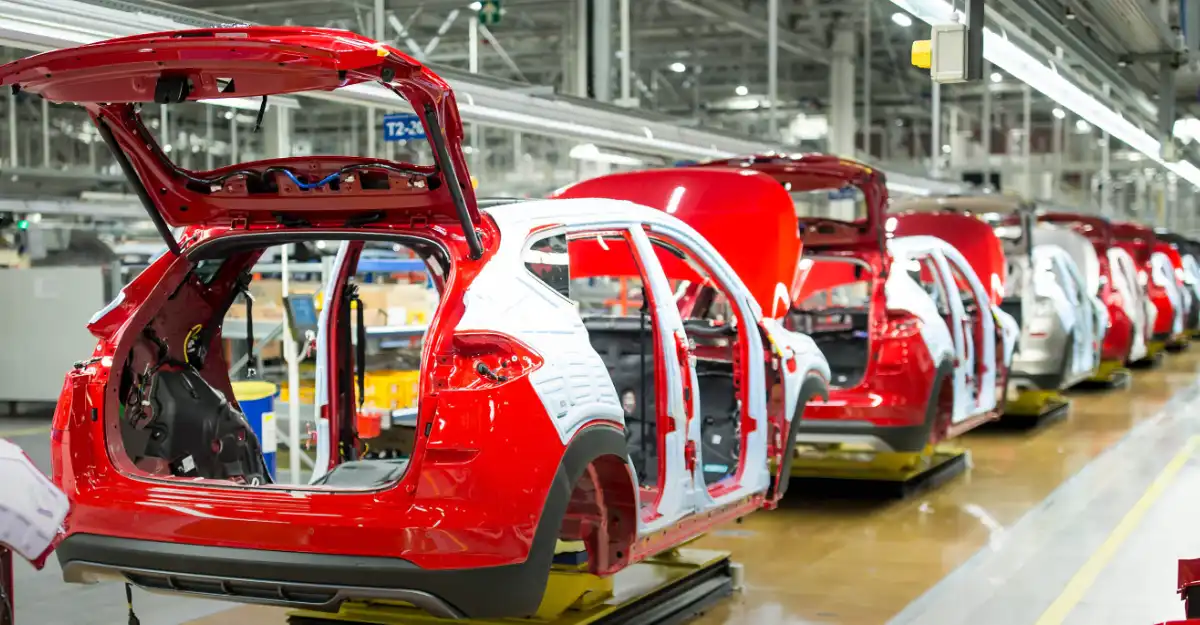Phnom Penh – Cambodia is rapidly emerging as a significant player in the global automotive industry, with investments and exports soaring beyond expectations. As of 2024, the country attracted approximately $746 million in automotive sector investments while exports surpassed $1.1 billion, driven largely by tyre manufacturing. This remarkable growth, highlighted by Sun Chanthol, first vice-president of the Council for the Development of Cambodia (CDC), signals a transformative shift in the nation’s economic landscape, positioning it as a potential regional hub for automotive and electronics manufacturing.
A Roadmap to Economic Diversification
At the heart of this transformation lies a strategic roadmap launched in late 2022, aimed at turning Cambodia into a global hub for automotive parts and electronic components. During a meeting on June 17, 2025, Sun Chanthol reviewed a draft assessment report on the roadmap’s implementation for 2023-2024, underscoring its early success. “Following the launch of the roadmap, economic diversification has begun to bear promising fruit” he said. He noted that the $1.14 billion in exports for 2024 exceeded targets initially set for 2027, a milestone fueled by seven tyre production projects that have also boosted demand for Cambodian rubber.
The roadmap’s impact is evident in the diversification of Cambodia’s export portfolio. Once heavily reliant on textiles and agricultural products, the country now exports a growing range of manufactured goods, including machinery, electronic components, automotive tyres, and even fully assembled vehicles. This shift reflects a broader ambition to integrate into high-value global supply chains, a goal supported by political stability, improved transport infrastructure, and access to affordable skilled labor, as economist Hong Vanak of the Royal Academy of Cambodia pointed out in an interview with The Post on June 19, 2025. “Cambodia’s export products are becoming increasingly diversified, which allows the country to access more international markets and strengthens its national economy” he said.
Tyre Manufacturing: The Engine of Growth
A key driver of this economic surge is the tyre manufacturing sector, which has seen explosive growth. According to a report from the Ministry of Commerce, between January and November 2024, Cambodia exported $772.55 million worth of automotive tyres, a staggering 135.34% increase compared to the $328.27 million recorded for the same period in 2023. Pen Sovicheat, spokesperson for the ministry, attributed this success to the growing number of tyre manufacturing plants and the government’s proactive reforms in investment laws and market access negotiations. “The export of automotive tires is a success, and shows that Cambodia can bring its own products to the global market” he said.
The rise in tyre exports is more than a numerical achievement; it symbolizes Cambodia’s evolving industrial capacity. The sector not only generates significant revenue but also creates a robust domestic market for rubber, a critical agricultural commodity. With seven operational tyre production projects, Cambodia is leveraging its natural resources to fuel industrial growth, a synergy that could serve as a model for other sectors. However, sustaining this momentum will require addressing challenges such as global trade protectionism, which Sun Chanthol noted has slightly slowed progress in the electronics sector in 2024.
Automotive Assembly: Building a Regional Presence
Beyond tyres, Cambodia is also making strides in automobile assembly, with several plants operating across the country. Notable facilities include RMA (Ford) in Pursat province, Hyundai in Koh Kong, ISUZU in Kampong Speu, Toyota in Phnom Penh’s Royal Group Special Economic Zone, GTV Motor in Kandal, and BYD, which focuses on electric vehicle assembly in Preah Sihanouk. These plants represent a cross-section of global automotive giants betting on Cambodia’s potential as a manufacturing base, drawn by favorable investment conditions and strategic location within Southeast Asia.
The presence of electric vehicle assembly, particularly through BYD, hints at Cambodia’s alignment with global trends toward sustainable transportation. While data on electric vehicle exports remains limited, the sector’s growth could position Cambodia as a niche player in the green economy. Yet, scaling this segment will demand significant investment in infrastructure, such as charging networks, and workforce training to meet the technical demands of advanced manufacturing. If successful, this could further diversify Cambodia’s export base, reducing reliance on traditional industries.
Foreign Investment and Economic Implications
The influx of foreign direct investment (FDI) into Cambodia’s automotive sector—$746 million in 2024 alone—underscores the country’s growing appeal to international investors. Factors such as political stability and market opportunities, as highlighted by Hong Vanak, have played a pivotal role. Additionally, the government’s efforts to reform investment laws and negotiate broader market access with other countries have created a conducive environment for FDI. These reforms, coupled with Cambodia’s strategic location as a gateway to larger ASEAN markets, make it an attractive destination for manufacturers seeking cost-effective production hubs.
However, the reliance on FDI also raises questions about economic sovereignty and long-term benefits for local communities. While the automotive boom has created jobs and boosted exports, there is a need to ensure that profits are reinvested into domestic development, such as education and infrastructure. Moreover, the environmental impact of industrial expansion, particularly in rubber processing and tyre manufacturing, warrants scrutiny. Balancing economic growth with sustainability will be crucial as Cambodia navigates its industrial ascent.
Challenges on the Horizon
Despite the optimistic outlook, Cambodia’s automotive sector faces several hurdles. Global trade protectionism, as noted by Sun Chanthol, poses a risk to export growth, particularly in electronics, which could spill over into automotive components if geopolitical tensions escalate. Additionally, while the country benefits from affordable labor, upskilling the workforce to meet the demands of high-tech manufacturing remains a priority. Without targeted investment in education and vocational training, Cambodia risks losing its competitive edge to neighboring countries like Vietnam and Thailand, which have more established industrial bases.
Another challenge lies in infrastructure. While transport networks have improved, further development is needed to handle the increased volume of goods moving through ports like Sihanoukville Autonomous Port. Congestion and logistical bottlenecks could undermine export efficiency, a critical factor for maintaining investor confidence. Addressing these issues will require coordinated efforts between the government and private sector, potentially supported by international partnerships.
Looking Ahead: A Sustainable Industrial Future?
As Cambodia cements its place in the global automotive industry, the path forward is both promising and complex. The roadmap’s early success, with export targets met years ahead of schedule, offers a strong foundation for economic diversification. Yet, sustaining this growth will depend on navigating global trade dynamics, enhancing workforce capabilities, and prioritizing sustainable practices. The government’s commitment to reform and market expansion, as evidenced by ongoing negotiations for broader access, suggests a proactive approach to these challenges.
For now, Cambodia’s automotive sector stands as a testament to the power of strategic vision and international collaboration. As economist Hong Vanak predicted, the export of technologically advanced products is likely to increase, potentially opening new markets and opportunities. Whether Cambodia can transform this momentum into a lasting economic legacy remains an open question, one that will shape the nation’s role in the regional and global economy for years to come.
















